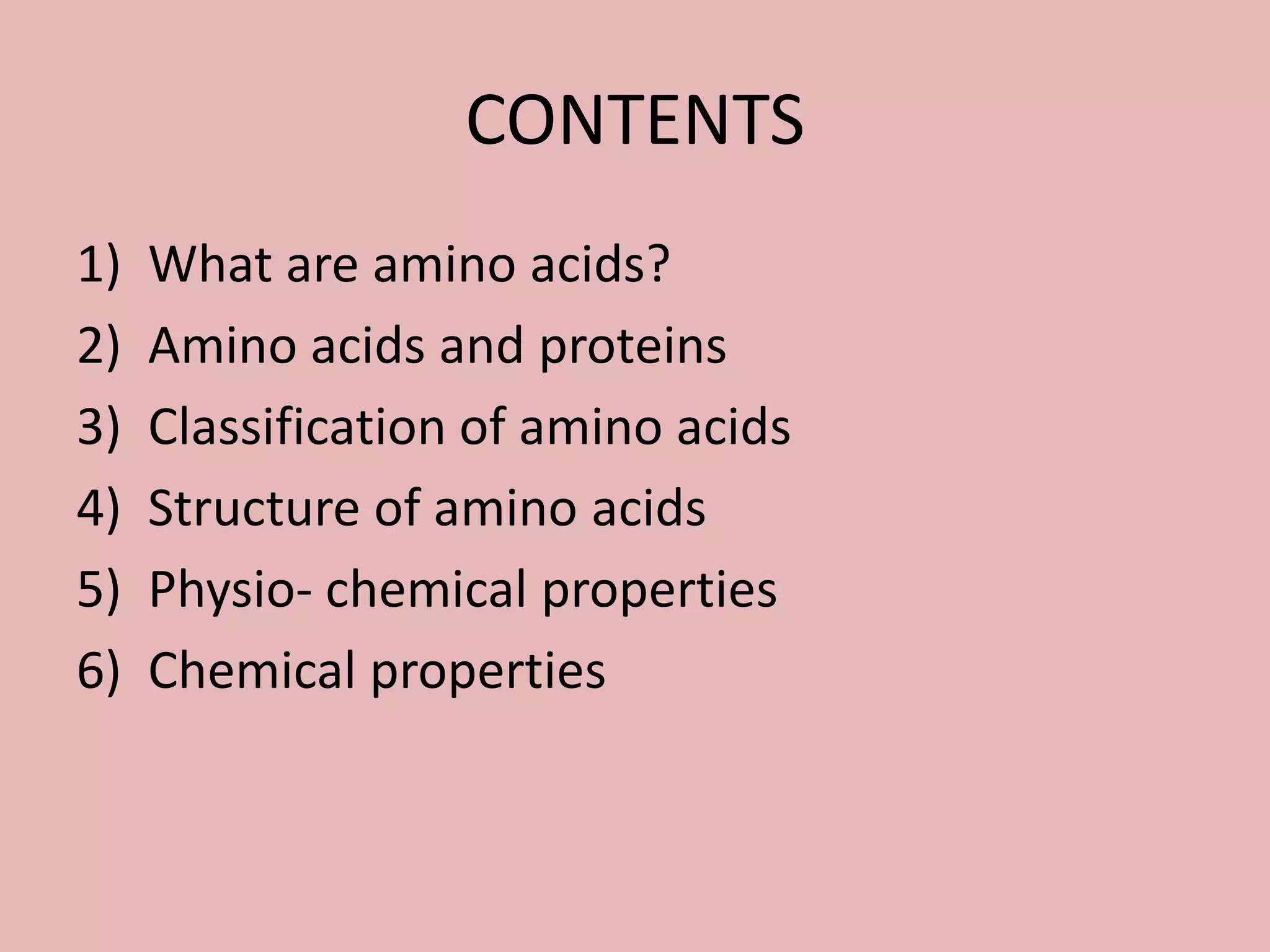This document discusses amino acids and their properties. It begins by explaining that amino acids are organic compounds that contain amine and carboxyl groups and have different R groups. Proteins are composed of chains of amino acids linked by peptide bonds. There are 20 standard amino acids that are the building blocks of proteins. The document then classifies amino acids based on their R groups and discusses their structures, chemical properties, and roles in the body.
























